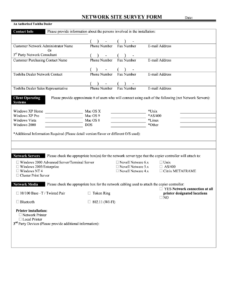The change control process is a critical part of maintaining a stable and reliable IT environment. A well-defined change control policy helps to ensure that changes are implemented in a controlled and orderly manner, minimizing the risk of disruption to business operations. It provides a framework for managing and approving proposed changes to IT systems and infrastructure.
An IT change control policy template can serve as a starting point for creating a comprehensive policy that meets the specific needs of your organization. It can help you to define the roles and responsibilities of those involved in the change control process, establish procedures for submitting and reviewing change requests, and outline the criteria for approving or rejecting changes. Here are a few best practices to follow when implementing an IT change control policy:
Components of an IT Change Control Policy
The IT change control policy template should include the following components:
- Objective: Clearly outline the purpose and objectives of the change control policy, such as minimizing disruptions, ensuring compliance, and maintaining system integrity.
- Scope: Define the types of changes covered by the policy, including hardware, software, network, and security changes.
- Roles and Responsibilities: Specify the roles and responsibilities of individuals involved in the change control process, such as the change manager, change control board, and technical teams.
- Change Request Process: Outline the process for submitting, reviewing, and approving change requests. This may include steps such as creating a change request form, conducting impact assessments, and obtaining necessary approvals.
- Change Approval Criteria: Establish the criteria for approving or rejecting change requests, such as the potential impact on business operations, the availability of resources, and regulatory compliance requirements.
- Change Implementation and Monitoring: Define the procedures for implementing approved changes, including testing, deployment, and post-implementation monitoring to ensure the change was successful.
- Documentation and Record-Keeping: Outline the requirements for documenting and maintaining records of changes, including change requests, approvals, and implementation details.
Benefits of Using an IT Change Control Policy Template
There are several benefits to using an IT change control policy template:
- Consistency: A template provides a consistent framework for managing changes, ensuring that changes are handled in a uniform manner.
- Efficiency: A template can help to streamline the change control process, reducing the time and effort required to implement changes.
- Risk Reduction: A template can help to identify and mitigate risks associated with changes, minimizing the likelihood of disruptions or security breaches.
- Compliance: A template can help to ensure compliance with industry regulations and standards, such as ISO 27001 or ITIL.
- Continuous Improvement: A template can facilitate continuous improvement of the change control process by providing a baseline for evaluating and refining the process over time.
Conclusion
An IT change control policy template is a valuable tool for organizations looking to implement a formal change control process. By providing a structured framework for managing changes, an IT change control policy template can help to minimize risks, improve efficiency, and ensure compliance. It is important to customize the template to meet the specific needs of your organization and to ensure that it is regularly reviewed and updated to reflect changes in technology and business requirements.
By following these best practices and utilizing an IT change control policy template, organizations can establish a robust change control process that supports their IT operations and enables them to adapt to changing business needs.
FAQ
What is the purpose of an IT change control policy template?
An IT change control policy template provides a framework for managing changes to IT systems and infrastructure in a controlled and orderly manner. It helps to minimize risks, improve efficiency, and ensure compliance with industry regulations and standards.
What are the key components of an IT change control policy template?
The key components of an IT change control policy template typically include the objective, scope, roles and responsibilities, change request process, change approval criteria, change implementation and monitoring, and documentation and record-keeping requirements.
What are the benefits of using an IT change control policy template?
The benefits of using an IT change control policy template include consistency, efficiency, risk reduction, compliance, and continuous improvement.
Who should be involved in the IT change control process?
The individuals involved in the IT change control process typically include the change manager, change control board, and technical teams. The specific roles and responsibilities of each group should be clearly defined in the IT change control policy.
How can an IT change control policy template be customized to meet the specific needs of an organization?
An IT change control policy template can be customized to meet the specific needs of an organization by considering factors such as the size and complexity of the IT environment, the industry and regulatory requirements, and the organization’s risk tolerance. It is important to involve key stakeholders in the customization process to ensure that the policy is tailored to the organization’s unique circumstances.

